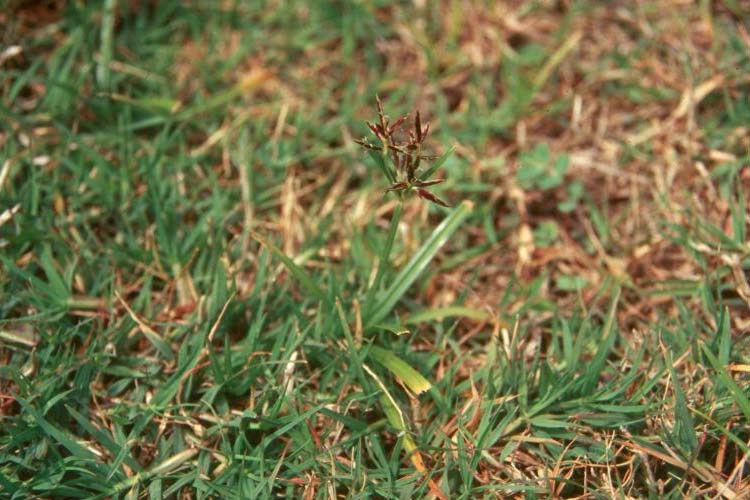
Identifying Common Texas Lawn Weeds
As a Texas homeowner, your lawn faces no shortage of threats to its healthy existence. The hot climate makes drought conditions common, and our hard clay soil means that watering must be precisely performed. The fungal disease, lawn pests, and even overwatering could all be the culprit of various lawn issues. While these are all valid threats, the particular category of threat we will be discussing today is lawn weeds. Invasive plant species are one of the biggest potential problems in lawn care, as they can do more than just damage your turf, but take it over entirely. There are three types of lawn weeds commonly found in Texas turf, including broadleaf, grassy, and sedge varieties. While prevention of these weeds lies mostly in pre-emergent control options, identification is essential when weeds are already present as some weeds such as Dallis Grass require post-emergent applications. A professional inspection will always be your best bet, but knowing how to identify common Texas lawn weeds will serve you well.

Broadleaf Weeds: Overview and Unique Characteristics
As a general rule of thumb, a broadleaf weed is going to be the easiest type of weed to identify and kill. This is because, unlike grassy and sedge weeds, broadleaf weeds look entirely different from your turf. However, this means that various types of broadleaf weeds will be dissimilar from one another, with few common characteristics beyond their namesake of broad leaves. Oftentimes they may present pretty flowers and can be tempting to overlook. Do not be fooled as these weeds will quickly take over your lawn just like their grassier counterparts. The leaves of broadleaf weeds will be veined or lobed, and the flowers they produce commonly become seedheads. They are very dangerous as they spread through both seeding and the development of invasive but deep root systems. Broadleaf weeds can also be found in annual and perennial varieties, with identification depending on how many seasons they last. Common examples of broadleaf weeds include burdock, clover, dandelion, thistle, and plantain. For more precise identification, let our team at Higher Ground take a look at the offending weed.

Grassy Weeds: Hiding in Plain Sight
The hardest part about identifying grassy weeds is distinguishing them from your turf. While these weeds will look eerily similar to blades of turf, there are some subtle differences. Lines may be dividing up the collar of the blade, or the bud leaf may be folded. Another indicator of bad grass is the cylindrical tip (ligule) sticking out of the tip of your turf. Grassy weeds may also be shiny, hairy, or possess excessively large leaves and a clump/bunch type nature about them. Color may be more yellow than green, and there may be an obviously large root system at the base of each blade. These invasive grassy weeds are much more common in unhealthy lawns, looking to prey on damaged goods. They grow back faster after mowing than your desirable turfgrass and go to seed quicker as well. Easy examples of these grassy weeds are crabgrass, dallisgrass, goosegrass, and KR bluestem. Some of these grassy weeds are annuals meaning they have to come back from seed each year and are best controlled with pre-emergents. These include Crabgrass, Annual Bluegrass, and Rescue Grass. Other varieties such as Dallis and KR Bluestem are perennial that only go dormant and then return just as your lawn does. These are the toughest to eradicate depending on how established and mature the weed is and pre-emergents are very ineffective, post emergents are usually your best bet. As these grassy weeds can look so similar to your turf, it would be smart to get a professional opinion to ensure proper identification and control.

Sedge Weeds: Nutrient Thieves
Very similar to grassy weeds, sedge weeds are grass-like plants that can be difficult to identify at first. The stark difference between sedges and grassy weeds is that sedges rise above the canopy of your turf, with obvious seedheads at the peak of their stems. They spread below ground through rhizomes and do so quickly enough to rob your turf of a considerable number of nutrients. This lack of nutrients for your turf can lead to browning or yellowing, which can expand if the sedge weed is left unattended. Local sedge weeds to look out for include nutsedge, kyllinga, and water chestnut. Sedges spread fastest in over-watered areas and currently there isn’t much in the form of viable pre-emergent controls in the market. Post-emergents are generally the go-to method for treatment.
Higher Ground Lawn Care and Lighting are ready to take your property to a higher level. Experience why your neighbors and businesses in University Park, TX & surrounding areas choose Higher Ground Lawn Care & Lighting to bring their property to the next level. Give us a call at (682) 206-3596 or check out our website today for more on identifying common Texas lawn weeds.
Ready to get started?


